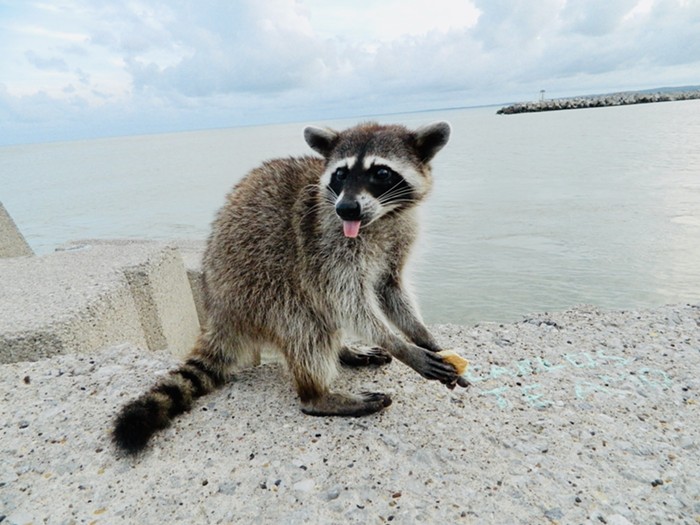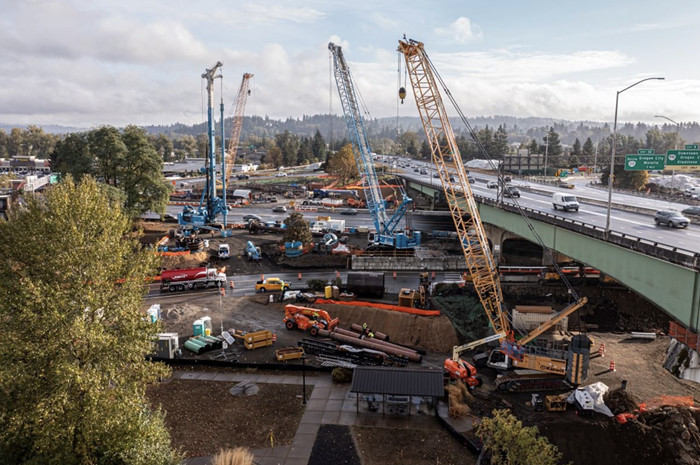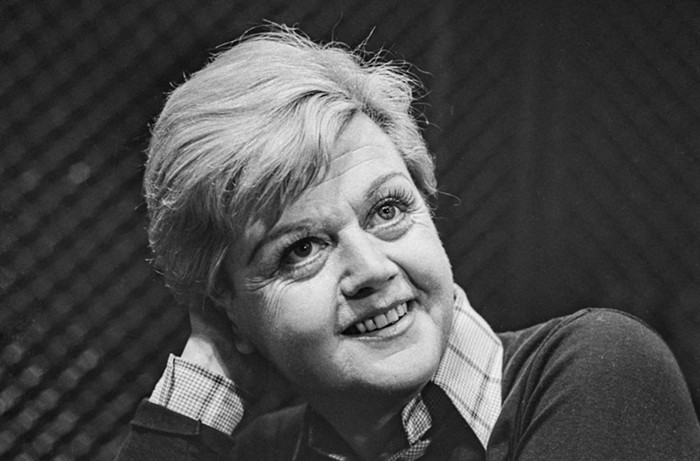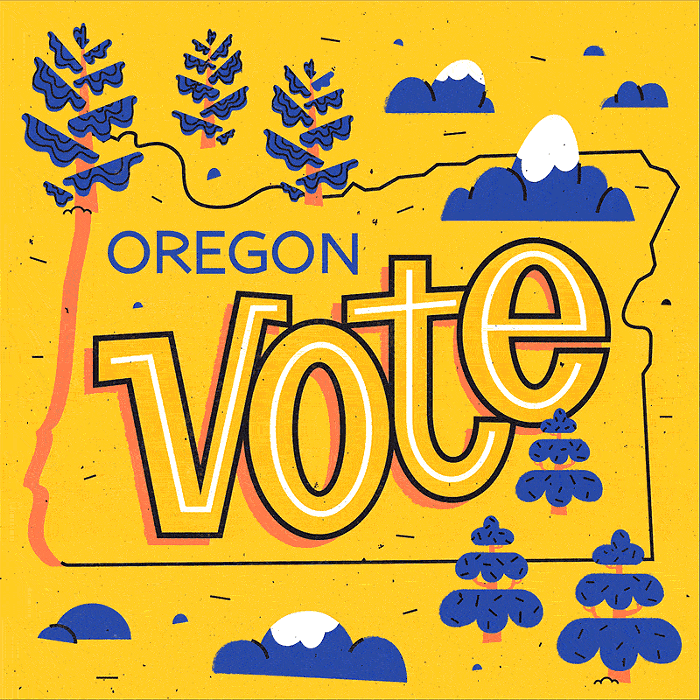EVERY DAY, thousands of Portlanders travel Naito Parkway as it hugs the bank of the Willamette River, carrying a steady stream of humanity through the heart of the city. It's a path that takes them past the cherry trees in Waterfront Park and within eyeshot of Chinatown, where freshly renovated buildings dominate the landscape. But while those who traverse this street might take the time to debate how to pronounce "Naito," it's unlikely they give much thought to the heritage of the man who lent his name to this thoroughfare—or question why the cherry trees were planted, or what other enterprises have occupied the nearby building at the corner of NW 3rd and Davis, where the fashionable Society Hotel now sits. As is too often the case in Portland, we have little memory of our city's past, and even less recollection of our failures as a community. There are few better examples of this than the internment of Japanese Americans during World War II.
For most of my life, I've been as guilty of this social amnesia as anyone. Having grown up as a fourth-generation Japanese American in the insular embrace of Portland during the '80s and '90s, my upbringing was as white as the Franz bread in my lunchbox and the Birkenstock-shod feet of my neighbors. Unless you lived in North Portland, it seemed everyone here was Caucasian; the issue of race was one that seldom crossed my mind.

- The Miyano family at the Rohwer Internment Camp. My grandmother, Sakae, is on the far left. This photo accompanied a letter to the War Relocation Authority begging that my great-grandfather be released from an Army prison camp and allowed to rejoin his family… in another prison camp. And you thought your last family portraitwas stressful! (Clockwise from left: Sakae, Yukiko [holding Masao], Tamaki, Yukihiro, Sitar)
- Courtesy of Miyano family
As an adult, my racial identity has often remained only skin-deep: I speak less Japanese than the average anime enthusiast, I'm innately suspicious of sashimi, and the first time I ever purchased a bag of rice was when I dropped my iPhone in the sink. For me, being Japanese American has usually been a fairly abstract concept and occasionally a minor annoyance: I'm doomed to bad driver jokes and listening to people butcher my name, but in all other respects, I enjoy the same privilege as any other thirtysomething male living in America's hipster utopia.
It's been surreal, then, to see my heritage brought front and center in national discourse in recent weeks. I've watched in astonishment as politicians and pundits have co-opted the issue of Japanese American internment in support of their arguments on immigration and national security. I've felt the chill run down my spine as Donald Trump rattled off a list of presidential proclamations as the precedent for his proposed ban on Muslims entering the country, and as the mayor of Roanoke, Virginia, suggested we "sequester" all Syrian refugees. It's forced me to reflect on the stories told by my grandparents' generation—about a time when being Japanese American wasn't just an abstraction, but a real and tangible burden.
ISSEI AND NISEI
Although my mother's family was from the Los Angeles area, their history closely parallels the experiences of Oregon's Japanese American community, many of which have been preserved as oral histories by the Oregon Nikkei Endowment, an organization dedicated to preserving and educating the public about Japanese immigrants in the Pacific Northwest. Both of my maternal grandparents were Nisei: second-generation Japanese Americans and, by virtue of their birth on US soil, American citizens. Their parents, however, were Issei—first-generation—and as such, were barred from citizenship by the Johnson-Reed Immigration Act of 1924. The year before, Oregon had joined Washington and California in passing laws that forbade Japanese and Chinese nationals from owning property or signing long-term leases.

- Soldiers bring the belongings of Japanese people into the Portland Assembly Center.
- Oregon Historical Society
In pre-war Oregon, most of what Portlanders now know as Old Town/Chinatown was considered Nihonmachi (Japantown), home to the largest concentration of Issei and Nisei in the state (although they were about to get a lot more concentrated than that). Many were shopkeepers and hotel proprietors. At the outbreak of WWII, the Mariners Building—which now houses the Society Hotel—was the site of the California Hotel, run by Issei proprietors, as were most of the neighboring establishments. To the east, several hundred Japanese Americans worked as tenant farmers in Hood River and Troutdale.

- Inside the Portland Assembly Center.
- Alfred A. Monner
Then came Pearl Harbor. My grandmother was six when the FBI arrested her father as a potential security risk under Franklin D. Roosevelt's 1941 Presidential Proclamation No. 2525 on "Alien Enemies—Japanese," one of the proclamations referenced by Donald Trump. My great-grandfather was arrested because he was a church minister and a well-known member of his community; my grandmother wouldn't see him again for two years. Mind you, the only reason Issei were "aliens" in the first place was because they were explicitly denied a path to citizenship by Congress.
Less than four score years after Abraham Lincoln used a presidential proclamation to free one race, his successor would use the same device to imprison another: A few months later, FDR's Executive Order No. 9066 forced my grandmother to leave her home, along with her pregnant mother and three siblings. A horse stall at the Santa Anita racetrack that was intended to house one thoroughbred became temporary housing for a family of five—and then, after my great-uncle was born, six. Though they were American citizens, the US government considered their pedigree suspect. Eventually, the family was exiled to a desolate camp in Rohwer, Arkansas, where they would spend the remainder of the war. These sites were called assembly centers and relocation camps, but they were more like prisons—bristling with barbed wire and armed guards. Those who found work in the camps were paid the same wages as penitentiary inmates.

- This building was replaced by 140 NW 4th (AKA the Smash Putt building) in the late ’70s and faces the big parking lot in the entertainment district.
- Oregon Historical Society
Approximately 3,600 Japanese from Oregon and Central Washington were rounded up and sent to the Portland Assembly Center at the outskirts of North Portland, where the Pacific International Livestock Exposition had been hastily converted into barracks. Sleeping accommodations for a family were a little larger than a walk-in closet, and although the livestock had been removed, the flies and the stench of manure remained. Families were only allowed to take what they could carry; everything else they owned had to be given away or sold (usually for pennies on the dollar) in a matter of days. Most would end up at internment camps in Tule Lake, California, and Minidoka, Idaho, although several hundred went to a work camp outside of Ontario, Oregon.
For his part, my grandfather fought his way through North Africa and Europe as part of the all-Nisei volunteer 442nd Regimental Combat Team, where he earned a Bronze Star and a battlefield commission. His three brothers served in similar units, as did several hundred men from Oregon—all serving under the same cloud of national distrust and suspicion. The 442nd would go on to become one of the most decorated units of the war, with 21 of its members earning the Medal of Honor. When their country questioned their patriotism, these were men who wrote their oath of loyalty in blood.
After the war, the Japanese American community went about rebuilding their lives. They started families and got jobs. They assimilated. Like most of their generation, my grandparents didn't talk much about the camps, aside from the occasional anecdote or the recurring family joke that my great-uncle liked betting on the horses because of his humble origins. Many from that generation felt ashamed of how they had been treated by their government. As African American writer James Baldwin wrote in 1965, "It comes as a great shock... to discover that the flag to which you have pledged allegiance, along with everybody else, has not pledged allegiance to you."
YOU CAN'T GO HOME AGAIN (LITERALLY)
Only about half of the Japanese Americans deported from Oregon returned after the war, and those who did found little welcome. Their businesses had been taken over by other tenants, and Nihonmachi had been permanently supplanted by Chinatown. In Hood River, many businesses placed "No Japs Allowed" signs in their windows, while the Oregon Legislature went so far as to pass a resolution urging President Roosevelt not to allow Japanese Americans to return to the state. Of those who came back, some found success: Brothers Bill and Sam Naito built a business empire that included the Made in Oregon chain and were so instrumental in redeveloping of Old Town and Chinatown that when Bill died in 1996, Front Avenue was renamed in his honor.
No Japanese American was ever convicted of espionage during WWII. The Japanese American internment had been the product of a culture of prejudice and fear that would take many years to dissipate. (My mother recalls schoolchildren in the Not-So-Swinging '60s chasing her around the playground, accusing her of bombing Pearl Harbor.) It would not be until 1952 that first-generation Japanese Americans were allowed to become US citizens, and not until 1988 that the Congress formally apologized and agreed to pay symbolic reparations to the internees (or, more often than not, their survivors and descendants).
In 2016, there's little to remind us of the Japanese American internment in Oregon. After the war, the Portland Assembly Center was converted back into livestock pens, and is now the location of the Portland Expo Center, where a small memorial gate serves as a reminder of the site's troubled history. The work camp outside of Ontario has vanished back into the desert, while Tule Lake became part of the National Park Service's "World War II Valor in the Pacific" National Monument, alongside the USS Arizona Memorial—though it's hard to find valor in a country imprisoning its own citizens. In Portland's Waterfront Park, those cherry trees are ostensibly part of the Japanese American Historical Plaza, but any chance for somber reflection is often lost in the scramble for a good Instagram pic come cherry blossom season.

- The Portland Expo Center stands on the former site of the Portland Assembly Center.
- finetooth / CC BY SA
Less than three-quarters of a century after World War II, we find ourselves wrestling with similar issues of race, culture, and national security, along with questions of law, order, and dignity. Which means that for the first time in my life, being Japanese American is a topical thing. That scares me. Sure, maybe only the most radical demagogues have argued for the "sequestering" of our citizenry, but it's profoundly troubling that anyone in today's America would have the myopia to cite our country's history of injustice as a foundation for new policies. When we contemplate whether or not to provide aid to refugees of a certain nation or creed and when we ponder how to prevent terror attacks by "enemy aliens," I can only hope that looking to the Japanese American experience provides us with a strong admonition against repeating our past mistakes, not the blueprints for new "assembly" and "relocation" centers.
Later this year, we'll elect leaders both locally and nationally. We'll task them with dealing with homelessness, poverty, and gentrification; we'll look to them for solutions to race relations, immigration, and foreign policy. And hopefully we'll remember that these daunting issues aren't just theoretical concepts—they're fundamental parts of life that impact real human beings, just as America's unfounded prejudices affected over 110,000 innocent people during WWII. It's something to think about the next time you walk down Naito Parkway, waiting for the cherry blossoms to bloom.













